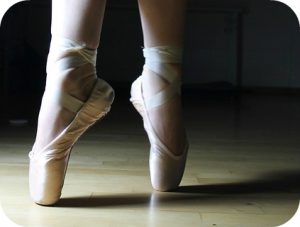 As one might expect from a centuries-old art form, the world of ballet doesn’t adapt to change all that quickly. For instance, many ballerinas depend on a type of pointe shoe designed more than 100 years ago consisting of paper, glue and fabric. While this style is certainly reliable, it can also create a great amount of discomfort or even injury for dancers. After all, the “pointe” in the shoe’s name refers to the ballerina’s need to stand readily on the tips of their toes throughout a performance. Striking this pose on a regular basis often leads to minor abrasions like corns as well as major injuries, such as the one that entrepreneur Kelly Schmutte experienced as a teenager.
As one might expect from a centuries-old art form, the world of ballet doesn’t adapt to change all that quickly. For instance, many ballerinas depend on a type of pointe shoe designed more than 100 years ago consisting of paper, glue and fabric. While this style is certainly reliable, it can also create a great amount of discomfort or even injury for dancers. After all, the “pointe” in the shoe’s name refers to the ballerina’s need to stand readily on the tips of their toes throughout a performance. Striking this pose on a regular basis often leads to minor abrasions like corns as well as major injuries, such as the one that entrepreneur Kelly Schmutte experienced as a teenager.
During a solo in “Sleeping Beauty” featuring many leaps on pointe, the young dancer lost the nail on her big toe as she skipped onstage. The gruesome injury convinced Schmutte that there had to be a better way to keep her feet protected while she danced. She began developing prototype inserts for pointe shoes as an undergrad at Stanford University, continuing her research for years after graduation. Her efforts led to a final product called PerfectFit Pointe, an insert that relies on silicon putty to distribute dancers’ weight more evenly and reduce the chance of injury.
Armed with what she considered to be a revolutionary product, Schmutte next set out to convince elite dance studios to give her inserts a try. Unfortunately, most of the ballet instructors she approached were reluctant to test out the unproven inserts. So to get her product in the public eye, Schmutte decided to contact professional dancers individually rather than go through studios. She sent Instagram messages to dozens of ballerinas in major companies hoping that a few would be curious about her newly developed inserts. Schmutte soon received a number of responses from interested ballerinas who quickly became converts once they put the inserts on. Now dancers in some of the world’s most prestigious ballet companies not only wear PerfectFit Pointe inserts, but they frequently post about them online as well. Schmutte hopes this social media exposure will allow amateurs to find out about her product, allowing her to expand her business while also making ballet safer for dancers the world over.
Questions:
- What are the advantages of using public figures in a marketing campaign? What are the disadvantages?
- Why are some institutions and organizations reluctant to adapt to change?
